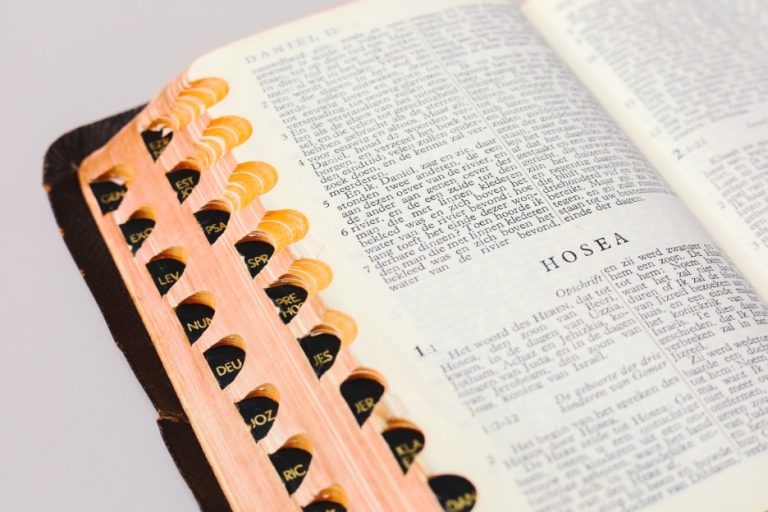Plotting in Hosea: How Does the Author Create Intrigue?
Photo by Dimitri Kuliuk
Hosea by Joseph Descans is not just a love story with a prostitute but a modern reinterpretation of the biblical tale of the same name, adding a fresh and intriguing perspective to the narrative.
The word of the Lord came to Hosea, son of Beeri, during the reigns of Uzziah, Jotham, Ahaz, and Hezekiah, kings of Judah, and during the reign of Jeroboam, son of Jehoash, king of Israel.
– Hosea 1:1
Yet, the author’s masterful storytelling skills are evident in how he managed to infuse so much intrigue into a story that was already well-known, leaving readers in awe of his craft. How did he do it?
How Does the Author Create Intrigue?
Romance novels, by their very nature, promise a journey towards love. So, in theory, every romantic plot should be quite predictable. Coupled with Hosea being a reinterpretation and a retelling of an old story, these should make the novel much more bland and straightforward.
Yet, it’s not.
How did Joseph Descans write his love story in a way that’s fresh and even more engaging?
The key to a captivating narrative lies in weaving intrigue—that delicious mystery that keeps readers turning pages.

Photo by Yan Krukau
Plotting in Hosea: Obstacles with Layers
Every romance needs a central conflict that keeps the couple apart. In this case, Hosea has the fact that the two leads, Daniel and Candace, are from two very different worlds. But to truly intrigue his readers, Descans went beyond the surface. Giving his obstacles layers and layers.
Unearthing the history that Candace is carrying and deciphering how Descans pulled biblical narrative through a modern lens are very potent sources of intrigue.
- AUTHOR’S TIP: By letting your characters grapple with the issues between them and the community around them, you force them to confront their vulnerabilities and find each other for support.
Plotting in Hosea: Foreshadowing and Red Herrings
The dance of will-they-won’t-they is a classic tool for heightening romantic tension. However, this doesn’t always have to be about physical intimacy. Joseph Descans does this correctly. Daniel and Candace share a strong emotional connection- it’s kind of obvious- but Candace fears commitment. She thinks that things are too good to be true. Without spoiling things too much, there are a lot of things that are keeping them apart.
By creating situations that bring these characters together to work together, you, as an author, can establish situations that lead to stolen glances, lingering touches, and unspoken desires.
- AUTHOR’S TIP: Plant seeds of doubt and intrigue early on. This could be a cryptic, overheard conversation, a seemingly insignificant object, or a recurring symbol. However, avoid predictability. Throw in red herrings to keep the reader guessing. Don’t always make the foreshadowing obvious—a subtle hint can be just as effective.
Plotting in Hosea: Raising Intrigue

Photo by Andrea Piacquadio
As your story progresses, raise the stakes to keep the reader invested. Let the tension escalate. In Hosea, there’s a lot of tension you’d love to know about. Perhaps an external threat forces the couple to confess their feelings before it’s too late. A looming deadline may force them to choose between love and a dream job. Higher stakes create a sense of urgency and make resolving the conflict all the more satisfying.
- AUTHOR’S TIP: End chapters with cliffhangers that leave the reader desperate to know what happens next. Twisting the plot with unexpected turns keeps the reader on the edge of their seat and invested in the characters’ journey.
Plotting in Hosea: Remember the Romance
Not all intrigue requires high-octane action. Sometimes, a slow burn can be just as effective, and that is what Descans did, despite the fact that in the first few pages, it’s obvious what will happen.
Let the connection between the characters simmer, building anticipation through stolen glances, witty banter, and unspoken desires. This allows for a more profound emotional payoff when the characters finally confess their feelings. While intrigue is vital, the core of the story should always be romance.
- AUTHOR’S TIP: Don’t let the mystery overshadow the emotional connection between the characters. Intersperse moments of intrigue with scenes that showcase their growing affection.
CONCLUSION
By weaving intrigue into your romantic narrative, you create a captivating and emotionally resonant story. Remember, a touch of the unknown will keep your readers guessing, turning pages, and ultimately, falling in love with your characters and their journey towards happily ever after.
If that’s got you intrigued, Hosea: The Prophet Who Married a Prostitute can be bought in every major online bookstore. CLICK HERE.







